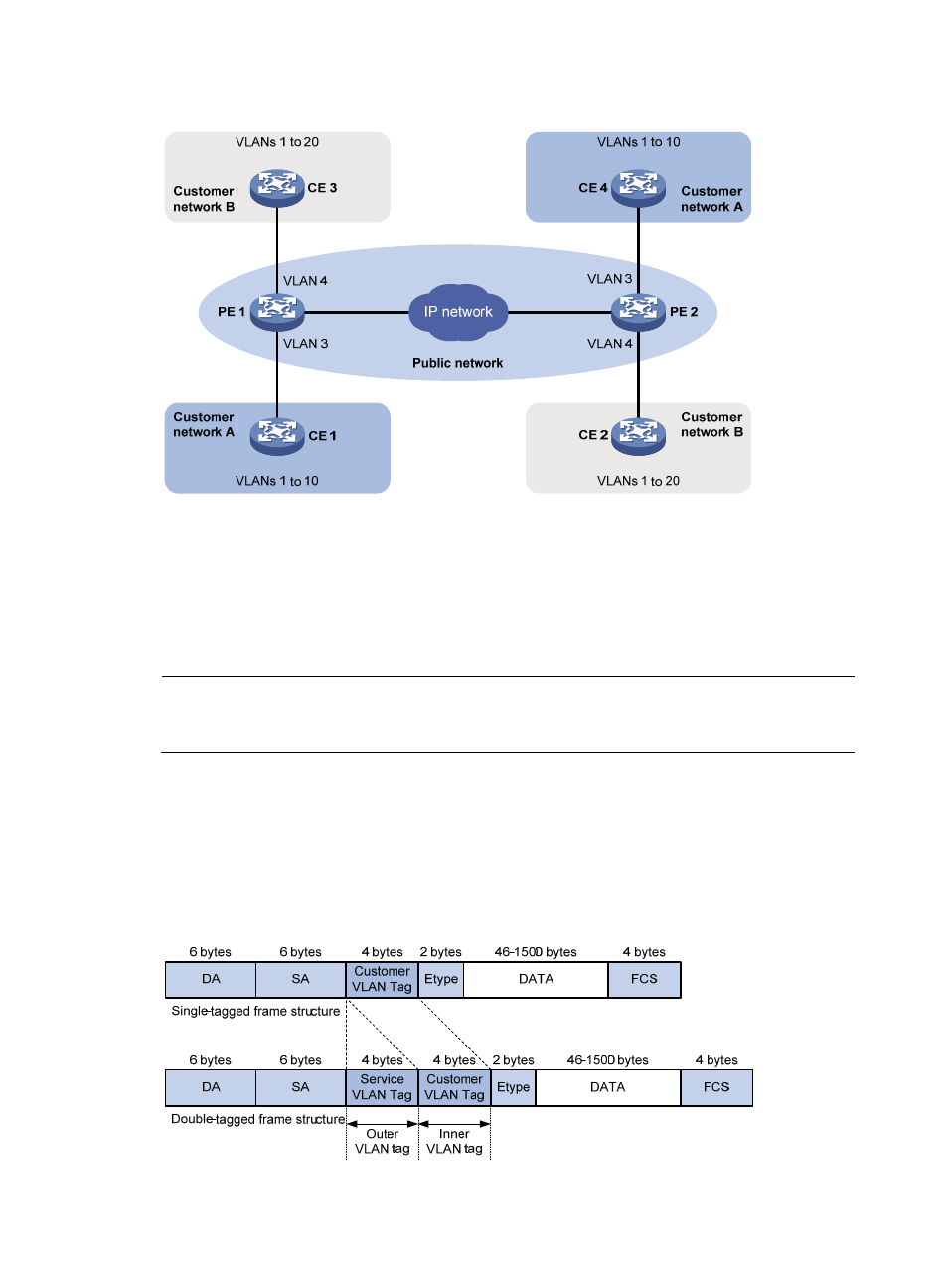Qinq frame structure – H3C Technologies H3C S12500 Series Switches User Manual
Page 152

139
Figure 43 Typical QinQ application scenario
As shown in
, customer network A has CVLANs 1 through 10, and customer network B has
CVLANs 1 through 20. The service provider assigns SVLAN 3 to customer network A and SVLAN 4 to
customer network B. When a tagged Ethernet frame from customer network A arrives at the edge of the
service provider network, the edge device tags the frame with outer VLAN 3. When a tagged Ethernet
frame from customer network B arrives at the edge of the service provider network, the edge device tags
it with outer VLAN 4. As a result, no overlap of VLAN IDs among customers exists, and traffic from
different customers can be identified separately.
NOTE:
The QinQ feature is implemented based on the 802.1q standard. It is necessary that all the switches along
the tunnel support the 802.1q standard.
QinQ frame structure
A QinQ frame is transmitted double-tagged over the service provider network. As shown in
,
the inner VLAN tag is the CVLAN tag, and the outer one is the SVLAN tag that the service provider has
allocated to the customer.
Figure 44 Single-tagged Ethernet frame header and double-tagged Ethernet frame header